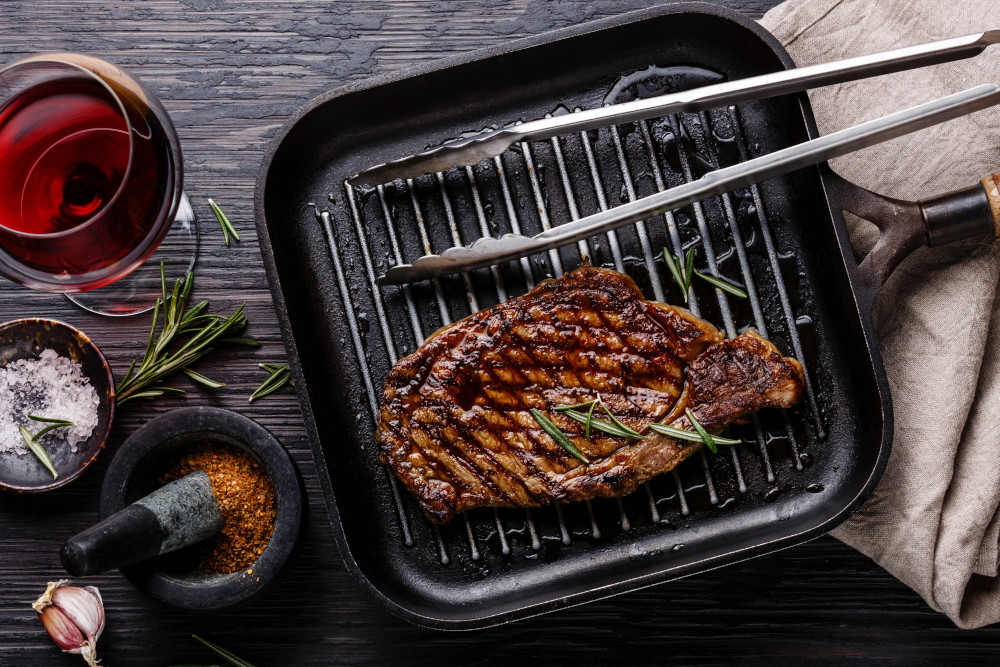1. PURCHASE
With the quality of the raw material, your frying result stands and falls. Beef must be well hung. That’s why our butchers guarantee a maturation period of at least 28 days for all our beef steaks. We also have a handy Grill Master Guide to help you barbeque your Gourmet USDA Steak to perfection.
2. PREPARATION
To achieve an optimal frying result, take your gourmet meat of the refrigerator at least 30 minutes before frying. It’s very important for the steak to reach room temperature before frying, and not go directly from the fridge to the pan. So that it does not splash in the pan, please dab your steak with a kitchen towel before you put it in the pan. For rump steaks, you can cut the fat edge to prevent curling in the pan. We recommend seasoning your steaks only after frying.
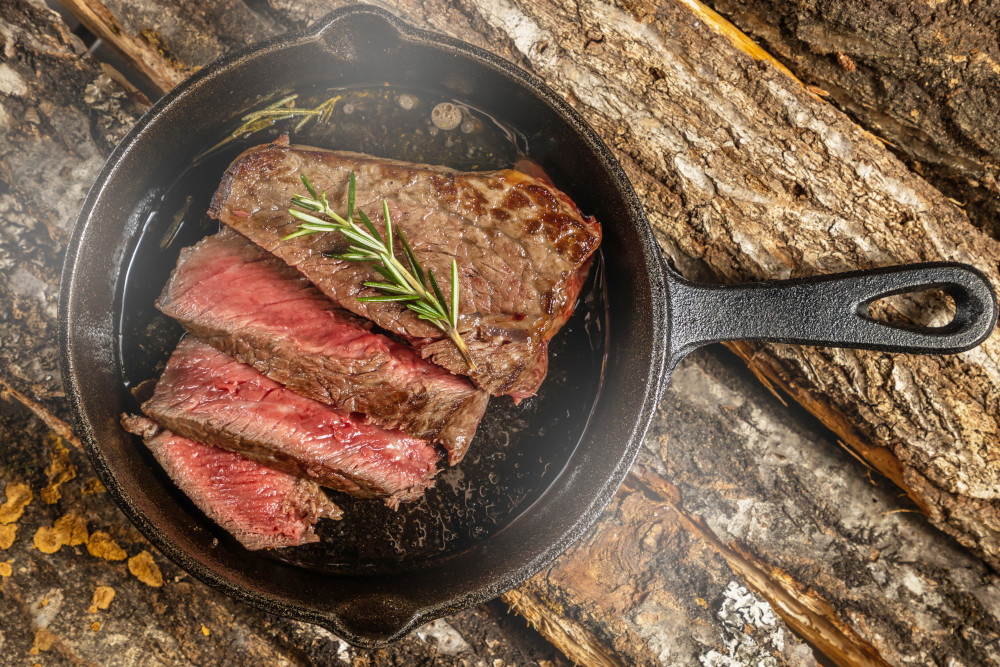
3. PAN
Whether you use a stainless steel or cast iron grill pan is a matter of personal taste. We recommend a cast iron steak pan or skillet – as will give your meat those beautiful sear lines. Coated or Teflon pans are not well suited to the high temperatures needed, so we advise against these where possible. To achieve an optimal frying result, heat your pan to 180°C before adding your steaks. Only turn your steaks if they can be easily detached from the bottom of the pan, and test this with your spatula. Never use a fork to turn, as valuable meat juice will be lost when the steak is pierced.
4. FAT
Here you have the choice between clarified Steak Butter or vegetable oil. We advise against using pure butter or olive oil, as bitter substances are produced at the high temperatures. Use your clarified butter or vegetable oil sparingly.
5. TEMPERATURE
Make sure that the pan has a temperature of at least 180°C when you put the steaks in. This temperature is necessary for the formation of roasting substances. If this is not achieved, the dream of crispy steak is over. Fry only two steaks in a normal grill pan at a time, because with more than two steaks, the temperature in the pan drops too much. Fry your steak only briefly and then remove from the pan and place in the oven (see table below). Cook at a low temperature of 90-95°C. Cooking in the oven is especially recommended for fillet steaks.
6. TIME
We call this cooking method “short fried”, because the meat is only fried for a few minutes over high heat. The frying times for steaks can never be specified completely exactly. They depend on thickness, heat and weight. The frying times given below will apply to steaks of 2cm thickness. For every 1cm more in thickness you should add an extra minute to your cooking time.
7. PAUSE
To get the perfect USDA Prime or Choice Steak, you need peace and quiet. Before serving, please allow your steak a rest period of at least 1-2 minutes. Your steak needs this time so that the meat juice can spread properly. To prevent your steak from cooling down, wrap it in aluminium foil.
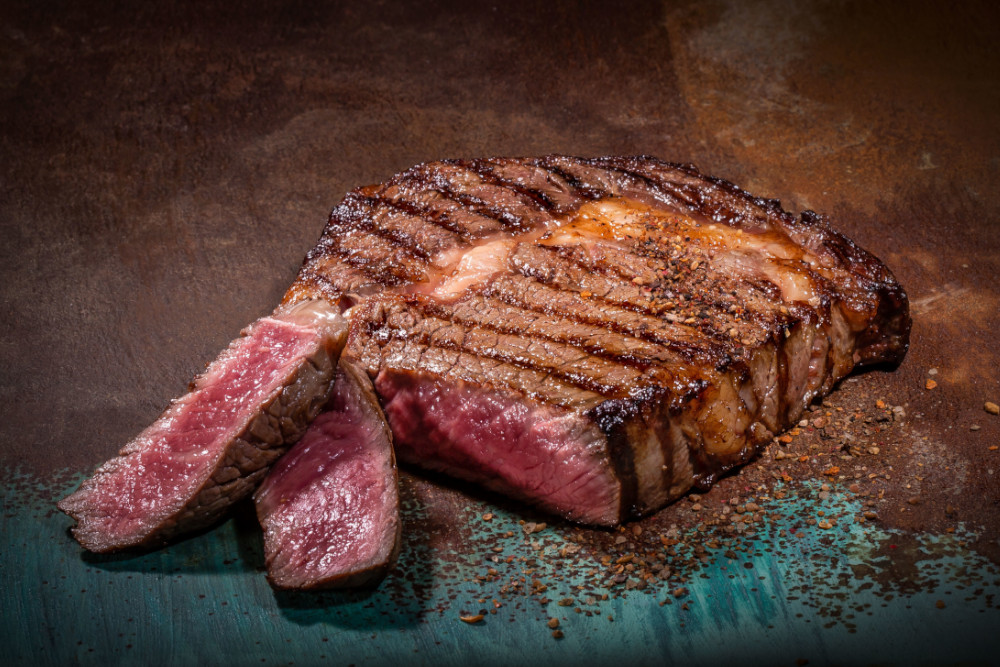
8. PLATE-It-UP
A warm plate is important because you should take your time and enjoy your steak. To warm up the plates you can pop them in the microwave for a minute or two – making sure you use only microwave safe plates. You can also use the residual heat of your oven to warm your plates while your steak rests in the aluminium foil. Be sure to take protective measures when handling your heated plates – use an oven glove when moving them after warming.
Bonus Tip: Perfect Steak In The Palm Of Your Hand
No matter how you enjoy your steak, fry it to the perfection with this easy trick. To determine if your steak is cooked, you only need one tool: your hand! With the palm test, you can find out within a few seconds whether your steak is rare, medium or through. First, press the middle of the meat of your delicious steak to feel it give way. Then compare it to your palm of your hand. Our illustrations below show you how it works.
RARE
Core temperature: approx. 45°C – 52°C (core raw)
MEDIUM RARE
Core temperature: approx. 53°C – 56°C (inner core raw)
MEDIUM (Pink)
Core temperature: approx. 57°C – 59°C (half done)
WELL DONE
Core temperature: approx. 60°C – 63°C (cooked through)


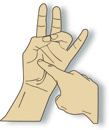
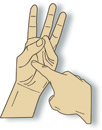
Place your left thumb and forefinger together (without pressure) and use your right forefinger to press on the muscle underneath the thumb. It should feel very soft there, like a sponge.
Place your thumb and middle finger together and press on the muscle below the thumb. It should feel light, slightly forgiving.
Place the ring finger on the thumb and press on the muscle below the thumb. The bale should hardly yield to the pressure of the finger.
To do this, place your little finger on your thumb and press on your muscle below the thumb. The result should be hard but elastic.

|
Doneness |
Temperature |
|
Rare |
45-52°C |
|
Medium Rare |
53-56°C |
|
Medium (Pink) |
57-59°C |
|
Well Done (Cooked Through) |
60-63°C |
We advise against overcooking your fine steak. Regardless of the meat quality, even the finest steak can easily become as tough as old boots when left in the pan too long. Nobody wants that with such great meat. Find out more about USDA Beef Steak grading in our handy guide here.

